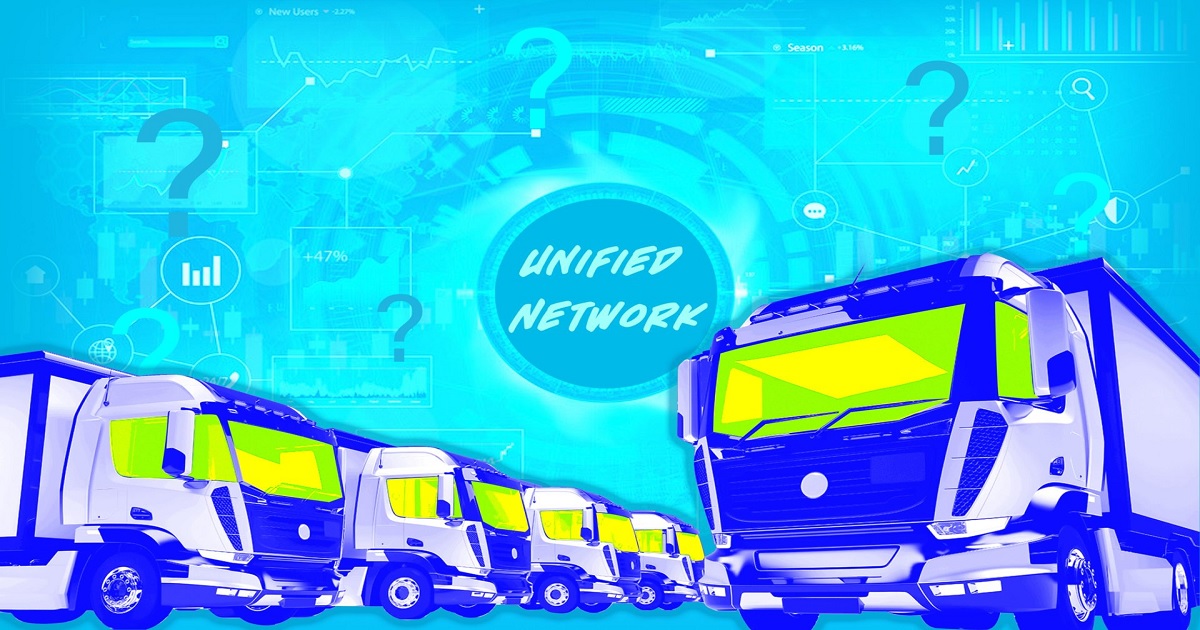
Enterprise Iot
Article | July 20, 2023
As consumer demands evolve, fleet managers are turning to IoT to deliver products faster and more efficiently. The progress being made in edge computing represents the full potential of IoT: the power of data on the move. However, operating on the edge also reveals some of IoT’s greatest challenges: maintaining network security as the number of endpoints multiplies; rethinking traditional business models as industries become increasingly interdependent; and, perhaps most importantly, establishing a seamless, reliable network across borders, cultures, and regulatory environments.
Read More

IoT Security
Article | June 27, 2023
Explore the world of readings on IoT security, to address complex cyber security challenges and privacy issues. It caters to a wide range of readers including industrialists, students & enthusiasts.
The Internet of Things (IoT) has revolutionized industries, enabling innovative applications and improved efficiency. However, along with the numerous benefits of the IoT comes the pressing need for robust security measures. As IoT devices become more prevalent and interconnected, their risks and vulnerabilities also increase. The experts in the domain must stay updated with the latest security practices and techniques to ensure IoT systems' integrity, confidentiality, and availability. A wide range of books has been explicitly tailored address these security concerns.
1. Analytics for the Internet of Things (IoT)
Author: Andrew Minteer
Analytics for the Internet of Things (IoT): Intelligent analytics for your intelligent devices provides a comprehensive guide for businesses aiming to make informed decisions and gain greater control over their IoT infrastructure. Written by an expert in the field, this book equips readers with the essential knowledge and techniques to solve the unique challenges associated with IoT and extract valuable insights from vast amounts of data. The book begins by tackling the complex task of extracting value from large volumes of often complex IoT data, empowering readers to make data-driven decisions. Strategies to address data quality concerns are discussed, ensuring that readers are equipped to handle the inherent challenges. It offers readers approaches to optimize business value and bring down costs. Scaling both data storage and analytics is a critical consideration in IoT deployments, and the book provides practical insights into handling scale effectively. The book covers a range of topics, including transmission protocols, data flow, value extraction, geospatial analytics, machine learning, and optimizing business value.
2. Industrial Internet of Things (IIoT)
Editors: R. Anandan, Suseendran Gopalakrishnan, Souvik Pal, Noor Zaman
One of the essential IoT security books, Industrial Internet of Things (IIoT): Intelligent Analytics for Predictive Maintenance comprehensively explores how the industrial internet is transforming through increased network agility and the ability to deploy, automate, integrate artificial intelligence, orchestrate, and secure diverse use cases at hyperscale. The adoption of industrial automation on a large scale is revolutionizing business processes, with the market for industrial robots projected to reach $73.5 billion by 2023. The book highlights how IoT industrial automation provides numerous advantages, including enhanced efficiency, high accuracy, cost-effectiveness among others. This book presents real-world case studies in IIoT, robotic and intelligent systems, and web-based applications. The content is tailored to appeal to a broad audience, including working professionals, educators, and researchers in various technical disciplines. The book provides industry leaders with valuable insights by proposing business models that revitalize the workforce.
3. IoT and OT Security Handbook
Authors: Smita Jain, Vasantha Lakshmi, Foreword: Dr Rohini Srivathsa
IoT and OT Security Handbook: Assess risks, manage vulnerabilities, and monitor threats with Microsoft Defender for IoT is a comprehensive guide that equips industrial security, IoT security, and IT security professionals with the knowledge and tools to effectively address cybersecurity challenges in the rapidly evolving world of IoT and OT. In the era of the Fourth Industrial Revolution, where digital transformation and connected industries dominate, the book sheds light on the pressing security concerns that must be addressed to ensure data protection and operational resilience. Through a deep dive into the Purdue model of reference architecture, readers gain a solid understanding of common cyber-attacks prevalent in IoT and OT environments. The centerpiece of the book revolves around Microsoft Defender for IoT, a powerful security solution specifically designed to safeguard IoT and OT ecosystems. Furthermore, the concept of zero trust, which is crucial for establishing a robust security foundation, is thoroughly explored with practical insights on its implementation in the context of IoT devices.
4. Practical Internet of Things Security
Author: Brian Russell, Drew Van Duren
Practical Internet of Things Security: Design a security framework for an Internet connected ecosystem is an indispensable guide that navigates the complex realm of securely building and deploying systems in our IoT-connected world. The book primarily targets IT security professionals, security engineers, and individuals responsible for ensuring the security of their organization's data in the IoT landscape. However, it also serves as a valuable resource for business analysts and managers seeking to understand and address the security challenges associated with IoT deployments. Readers will gain a wealth of knowledge and practical skills, including breaking down cross-industry barriers, building a rock-solid security program, applying systems security engineering and privacy-by-design principles, and harnessing cloud-based systems. It delves into the unique security challenges associated with IoT and provides practical guidelines for architecting and deploying a secure IoT ecosystem within an enterprise.
5. IoT: Security and Privacy Paradigm (Internet of Everything (IoE))
Editors: Souvik Pal, Vicente García Díaz, Dac-Nhuong Le
IoT: Security and Privacy Paradigm is a comprehensive and authoritative resource that explores the evolution of security and privacy issues within the realm of the IoT. This book serves as a single reference point for students, researchers, and practitioners seeking to better understand the IoT security platforms and privacy landscape. The book adopts security engineering and privacy-by-design principles to design and implement robust cyber-security solutions within IoT ecosystems. It takes readers on a journey, starting with exploring security issues in IoT-enabled technologies and their practical applications. The book provides practical guidance on tackling security challenges and constructing a secure infrastructure for IoT devices. The book thoroughly discusses security challenges and solutions in areas such as RFID, WSNs, and IoT. The primary audience for this book includes specialists, researchers, graduate students, designers, experts, and engineers focused on security-related issues and research.
6. IoT Security Issues
Author: Alasdair Gilchrist
IoT Security Issues addresses the rapid proliferation of internet-connected devices, where security often takes a backseat to product development. This book delves into the inherent vulnerabilities and IoT security challenges, offering insights on how to address and mitigate these issues. By examining the root causes of these problems and emphasizing the importance of programming and security best practices, the author presents practical solutions to combat the lax security processes prevalent in the IoT landscape. This book caters to a wide range of readers, including programmers who have yet to focus on the IoT, security professionals, and individuals with a keen interest in hacking and making. While a basic programming background would be beneficial for certain chapters later in the book, the core content is explained in a manner that is approachable for readers from various backgrounds.
7. Security and Privacy Issues in IoT Devices and Sensor Networks
Editors: Sudhir Kumar Sharma, Bharat Bhushan, Narayan C. Debnath
This book, of all the IoT security books, delves into the critical aspects of security breaches in IoT and sensor networks, offering a comprehensive exploration of potential solutions. The book takes a two-fold approach, thoroughly examining the fundamentals and theoretical foundations of sensor networks and IoT security. It then explores the practical IoT security solutions that can be implemented to enhance the security of these elements, providing illuminating case studies to reinforce understanding. The book is an invaluable resource for industry professionals working with wireless sensor networks (WSN) and IoT systems, enabling them to elevate the security of these interconnected systems. Additionally, researchers, material developers, and technology specialists grappling with the intricate nuances of data privacy and security enhancement will find the book's comprehensive information highly beneficial.
Final thoughts
IoT security for professionals involves implementing secure communication protocols, strong authentication, device management, data encryption, access control, and regular security audits. It is crucial to stay updated, maintain a security-aware culture, and prioritize the ongoing monitoring and adaptation of security measures to address emerging threats.
The above listed books delve into various aspects of IoT security, providing insights, strategies, and practical solutions to mitigate risks and protect IoT ecosystems. This article highlights some essential IoT security books that are indispensable resources for IoT professionals striving to enhance the security posture of their organizations. They also provide real world case studies, best practices and strategies to minimize risks.
Read More

Enterprise Iot
Article | May 11, 2023
Learn more about IoT data protocols and what makes them essential for a cohesive IoT ecosystem. This article will provide a detailed view of data protocols and their importance for modern businesses.
1 Significance of IoT Data Protocols for Business Operations
IoT ecosystems form an integral part of many businesses today, and IoT data protocols serve as the foundation for seamless communication and data exchange between connected devices. IoT protocols ensure the integrity and reliability of data, empowering businesses to make informed decisions, optimize operations, enhance productivity, and drive innovation. With standardized and secure IoT protocols and standards, companies can achieve efficient data transmission and allow for scalability across diverse IoT ecosystems. Understanding and leveraging the right protocols is essential for businesses to benefit from the full potential of their IoT investments and gain a competitive edge in today's interconnected world.
2 Understanding IoT Data Protocols
IoT data protocols are standardized rules and formats that ensure efficient and secure data transmission for efficient IoT communication. By adhering to established protocols such as MQTT, CoAP, and AMQP, businesses can maintain interoperability, scalability, and robust data transmission of IoT data, ensuring efficient data storage and management for their IoT ecosystem. This, in turn, empowers organizations to monitor and control critical processes in real-time and make informed decisions.
2.1 Role of IoT Data Protocols in the IoT Ecosystem
The seamless functioning of an organization's IoT ecosystem relies on the pivotal role played by IoT data protocols. These protocols, serving as the communication backbone, enable secure transfer and efficient data processing, thereby facilitating the seamless exchange of information within the IoT network. Consequently, businesses operating within the IoT sphere can harness the power of reliable data communication enabled by these protocols to unlock insights that drive innovation. IoT data protocols serve as the vital link that fuels the interconnected landscape of IoT devices, elevating the efficiency and efficacy of businesses as they navigate the complex web of IoT technologies and leverage its immense potential.
2.2 Overview of Common IoT Data Protocols
The IoT data protocols come with their own set of applications and challenges. Understanding each protocol's individual use cases will help businesses set up and scale their IoT device ecosystems.
MQTT (Message Queuing Telemetry Transport): MQTT is a lightweight and efficient protocol designed for low-power devices and unreliable networks. It uses a publish-subscribe model, making it ideal for IoT applications where bandwidth and power consumption are crucial factors, such as remote monitoring and control systems.
CoAP (Constrained Application Protocol): For resource-constrained IoT devices, CoAP is designed to enable smooth communication over the Internet. It uses a client-server model and is suitable for IoT applications where devices have limited processing power and memory, such as smart home automation, environmental monitoring, and healthcare systems.
HTTP (Hypertext Transfer Protocol): Although primarily designed for web applications, HTTP is also used in IoT systems for data transmission. The ubiquity and familiarity of HTTP make it a widely supported communication protocol. As a result, it is suitable for IoT devices that require high-level interoperability in applications that involve cloud integration, data analytics, and web-based control interfaces.
AMQP (Advanced Message Queuing Protocol): AMQP is a flexible messaging protocol ensuring reliable, secure, and interoperable communication between IoT devices and back-end systems. It supports both publish-subscribe and point-to-point messaging models, making it suitable for IoT scenarios involving complex routing, large-scale deployments, and enterprise integrations.
Zigbee: Zigbee is a wireless protocol designed specifically for low-power, short-range communication in IoT networks. It operates on the IEEE 802.15.4 standard and is known for its energy efficiency and mesh networking capabilities, leading to its widespread adoption in home automation, intelligent lighting, and industrial control systems.
3 Considerations for Choosing the Right IoT Data Protocol
Selecting a suitable IoT data protocol is essential to maintain smooth interoperability and a unified IoT ecosystem. Compatibility with existing infrastructure is crucial for seamless integration and cost-effective implementation. Security measures must also be robust to protect sensitive data from unauthorized access and potential breaches. Additionally, scalable and flexible data protocols in IoT are vital to accommodate future growth and evolving business requirements. Furthermore, the protocol's reliability and efficiency in transmitting data should align with the use case of IoT systems. Finally, considering the protocol's industry adoption and standardization level will also help minimize risks and enhance interoperability.
4 In Summary
IoT data protocols play a significant role in facilitating efficient and secure business operations within the IoT ecosystem. By learning more about the use cases of the most common protocols in the industry, businesses can consider factors such as compatibility, security, scalability, and reliability while choosing the most suitable option for their business. As IoT systems grow, more complex and reliable data protocols will emerge, paving the way for enhanced connectivity, interoperability, and transformative opportunities across various industries.
Read More

Industrial IoT
Article | July 20, 2022
IoT use cases span a variety of sectors and businesses. A typical Internet of Things (IoT) solution consists of a large number of heterogeneous IoT devices with sensors that generate data in a variety of formats at varying rates, which is then processed and analyzed to derive insights. In addition, IoT devices can connect to a network directly or through a gateway device, allowing them to communicate with one another and with cloud services and applications.
Create a layered architecture
An organization's IoT solution's architecture outlines its overall layout, including its physical components (such as sensors and actuators) and virtual components (like services and communication protocols). IoT system complexity can be managed by utilizing a modular strategy that divides the architecture into several layers and focuses on each tier separately.
IoT architectures have a tendency to outsource work to the edges of IoT networks (where the physical devices connect to the cloud). This aids data-driven IoT applications by lowering latency, enhancing privacy, and lowering bandwidth costs.
Devices layer
The device layer components include physical sensors and actuators that link to IoT devices and the IoT devices themselves. Although sensors and actuators are often not considered "smart" devices, they frequently connect to the architectural elements with higher computing power, either directly or indirectly (with the aid of gateway devices).
These devices often use over-the-wire protocols like Ethernet or wireless protocols like Bluetooth, Zigbee, WiFi, LTE, or RFID to transmit data.
Edge layer
The analytics and pre-processing services that are offered at the network's edge are included in the concept of the edge layer. This layer acts as a central integration point for subsequent layers (devices layer). For the upstream layers, it offers routing and device control features. In addition, this layer can be connected to pub-sub systems to convey events and listen in on them.
The size and heterogeneity of the devices and connectivity involved make designing data-driven IoT solutions hard. This article discusses some techniques for creating safe, adaptable, and scalable IoT architectures.
Read More